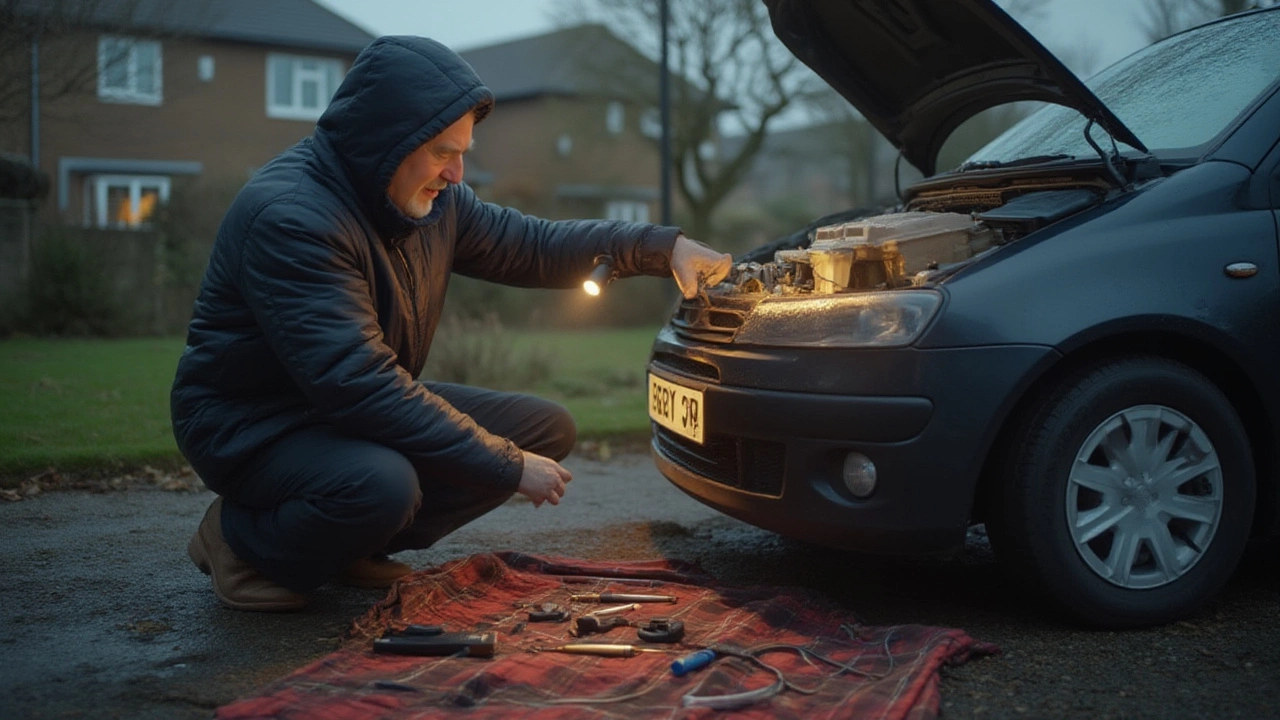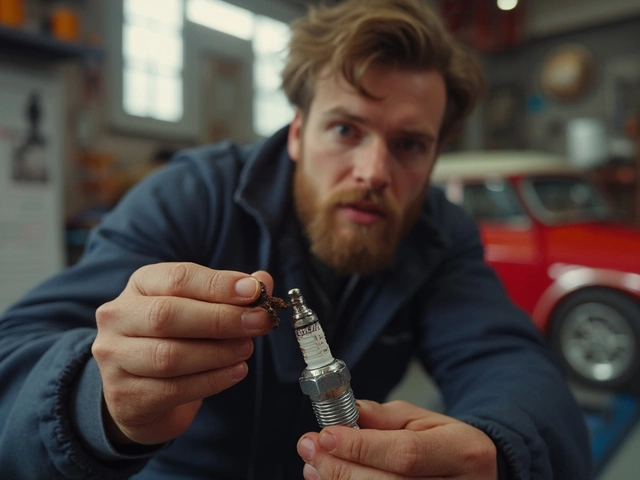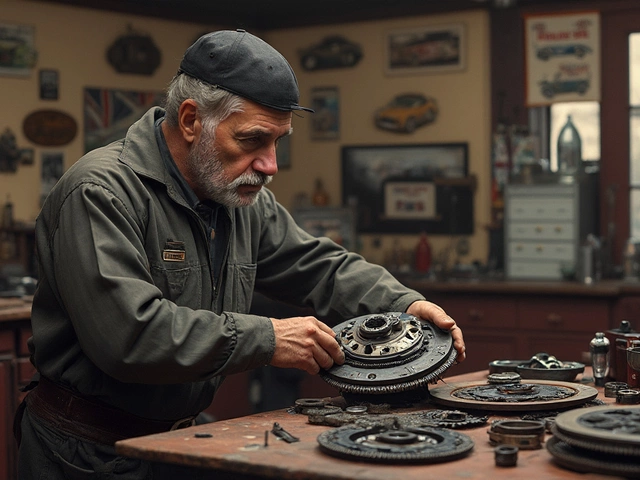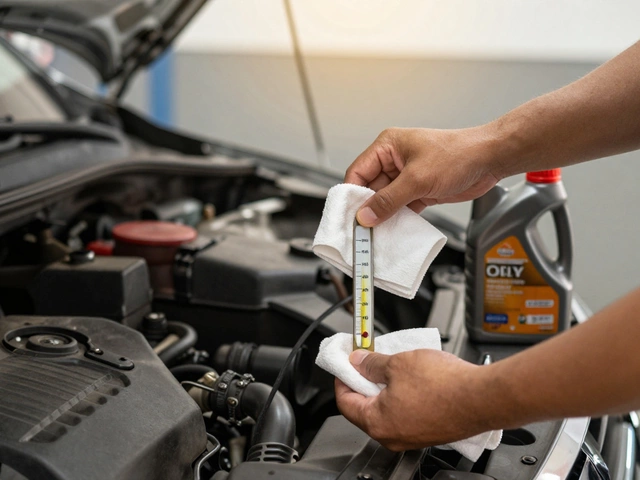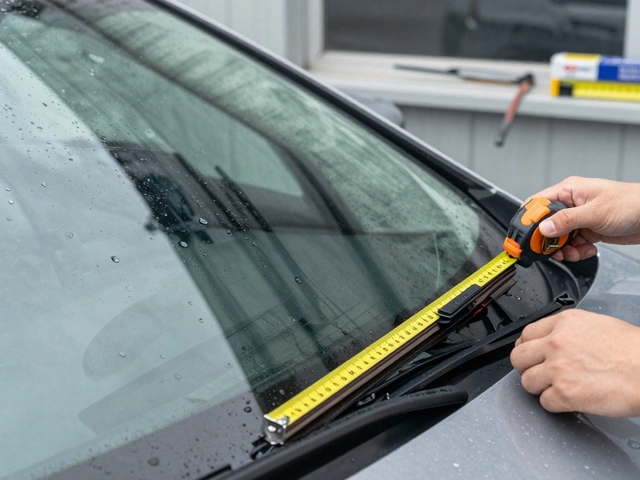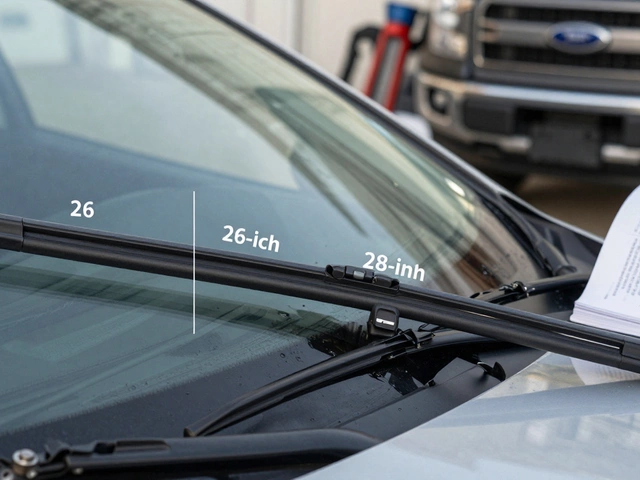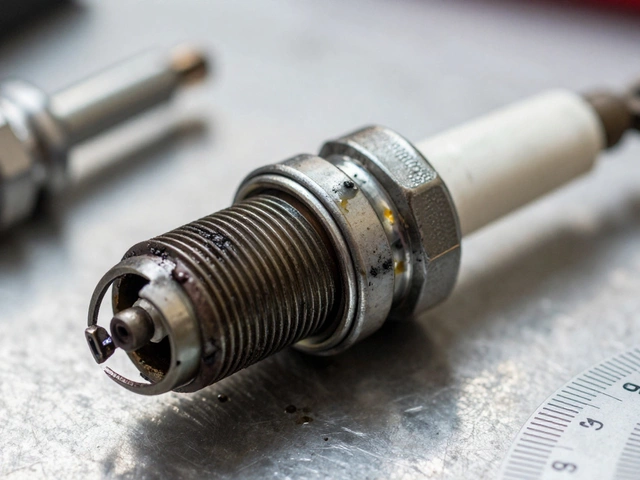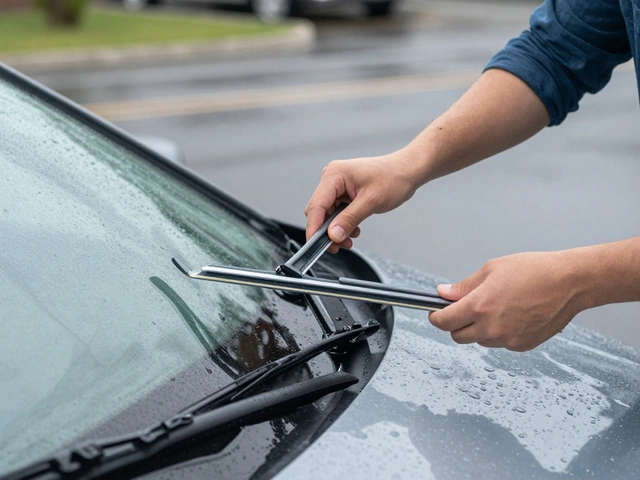Picture this: you jump into your car, twist the key, and nothing happens but that sad cranking sound. Maybe it sputters, coughs, or flat-out refuses to start. It’s easy to think of the battery or the starter, but a sneaky culprit could be the fuel pump—silent and often forgotten until it lets you down. Fuel pumps are the unsung heroes buried in your tank, quietly moving fuel from the tank to the engine. When they fail, your car doesn’t stand a chance. Kicking the tires won’t fix it, but knowing how to test a fuel pump yourself can save money, time, and a lot of stress. You don’t always need to be a mechanic or have high-tech tools to figure it out. Let’s get right into the thick of testing your car’s fuel pump—because no one likes being left stranded.
Spotting the Warning Signs: Is Your Fuel Pump the Problem?
Fuel pump failure almost never announces itself with fireworks and smoke—it's usually subtle. Think about the times your car seemed to lose power on a hill, shudder at high speeds, or just wouldn’t start after sitting overnight. Drivers sometimes notice a sudden loss of power when accelerating, a spluttering engine at high RPMs, or weird whining noises from under the car. If your car feels like it’s starving for fuel, that’s often right. Other symptoms include hard starts, especially after your car has been sitting for hours. You might also see the engine misfiring, rough idling, or surges and stalls at random moments. If your check engine light comes on and a scan shows codes like P0230 or P0087, they point directly to fuel delivery issues.
One easy way to check for a working fuel pump: switch the key to the "on" position (just before cranking). If everything’s quiet, that’s a hint that the fuel pump might not even be running. Most healthy pumps will give off a faint buzzing or humming noise from the back of the car for about two seconds as they prime the fuel system. No sound usually means no action—but be warned, some pumps are whisper quiet or only run during engine cranking. That's why it's smart to double-check with a friend who knows your make and model.
Dirty fuel filters, bad relays, a blown fuse, or wiring problems can act like a bad pump. Don’t just jump to buying a new pump (they’re not cheap, and swapping one isn’t a picnic). Start simple. Check the owner’s manual for your car’s exact fuse and relay location for the fuel system. A blown fuse or dead relay is a quick fix. But if replacements don’t wake the engine, it’s time to dig deeper. Weird fact: Some cars, especially late-2000s models from Ford and GM, are notorious for burning out their fuel pump relays long before the actual pump dies. Swapping a few-dollar relay sometimes revives a car thought to need a new pump.
If you’re smelling gasoline often, or your mileage has cratered, that’s another clue. Bad pumps don’t always quit—they can leak or push too little fuel, leading to rich running, rough idle, or emissions trouble. Some folks think their car is haunted because of random cut-outs; others pour money into sensors and spark plugs, when it’s really a weakening pump all along. Recognize the traps: not every fuel pump problem means a no-start; occasional hiccups can foreshadow a later, full-blown failure. Pay attention to how your car behaves after hot weather drives or low fuel—pumps love to overheat and fail when gas is low, as fuel actually helps cool the pump inside the tank.

Simple DIY Tests: Hands-On Ways to Check a Fuel Pump
You’ve caught a few warning signs. Before you start shopping for a replacement pump or booking a tow truck, let’s look at real-world tests anyone can try—no mechanical degree needed. One main test is fuel pressure. All engines have a specific fuel pressure they need for starting and running. You can check it with a fuel pressure gauge, which you can grab at most auto parts stores for little money. Most cars have a test port on the fuel rail under the hood—looks like a tire valve. Just screw on the gauge, turn the key on, and read the number. Compare this to your manual’s required psi. No or low pressure almost always means a weak or dead pump. For most modern cars, you want to see around 40-60 psi when the key is on. Anything in the teens or zeros, and your pump probably isn’t doing its job.
No gauge? There’s a classic "shade-tree" test called the fuel spray check. After relieving pressure safely (or having a shop do it), disconnect the fuel line under the hood and place it in a clear bottle. Have a buddy turn the key. If nothing comes out, no fuel is reaching the engine—not good. Of course, be careful—fuel is flammable and should always be handled outside and away from sparks. Use gloves and eye protection. Some mechanics call this the "poor man’s pressure test," and it’s surprisingly effective for pointing out dead pumps or bad relays.
Another age-old trick is the "thump test." Some electric pumps recover temporarily if you tap the bottom of the fuel tank firmly with a rubber mallet or even your hand. Sometimes a stuck or failing pump will engage just long enough to start the car—telling you, once and for all, it’s time to get a new pump. Sounds ridiculous, but there are countless real stories of stranded drivers saved by this quick hack.
If you have access to a multimeter, check the voltage at the pump’s electrical connector. There should be battery voltage (12-13 volts) when the key is in the start or on position. If voltage is there but the pump does nothing, it’s a pump issue, not wiring. If voltage is low, you’re chasing an electrical gremlin (bad ground, relay, or corrosion). Don’t overlook corroded or burned wiring near the tank, especially if your car lives in salty, wet climates.
One scientific fact: gasoline is not just for fuel but cools the electric motor inside your pump. Consistently running your car near empty can overheat the pump and shorten its life dramatically. Mechanics often see cars that die just after driving until nearly empty a few too many times. Keep your tank above a quarter to give the pump a fighting chance.
Struggling to get to the pump? Some cars have easy-access panels under the back seat—others make you drop the entire tank. Always take safety seriously: disconnect the battery and work outside if you plan to remove any lines or tanks. Gas fumes can be deadly even without a fire.
If you want an even clearer answer, try swapping your car’s fuel pump relay with another identical one from the fuse box—like from the air conditioning. If your car suddenly springs to life, the relay was the issue all along.
Another quick test: use a scan tool that reads live data. You can monitor fuel trim and pressure (if your car’s sensors report it). Sharp drops or spikes in pressure on the graph usually signal a failing component. Many newer cars (2010 and up) will even record trouble codes for inadequate fuel pressure—no need for guesswork if you have a reader handy.
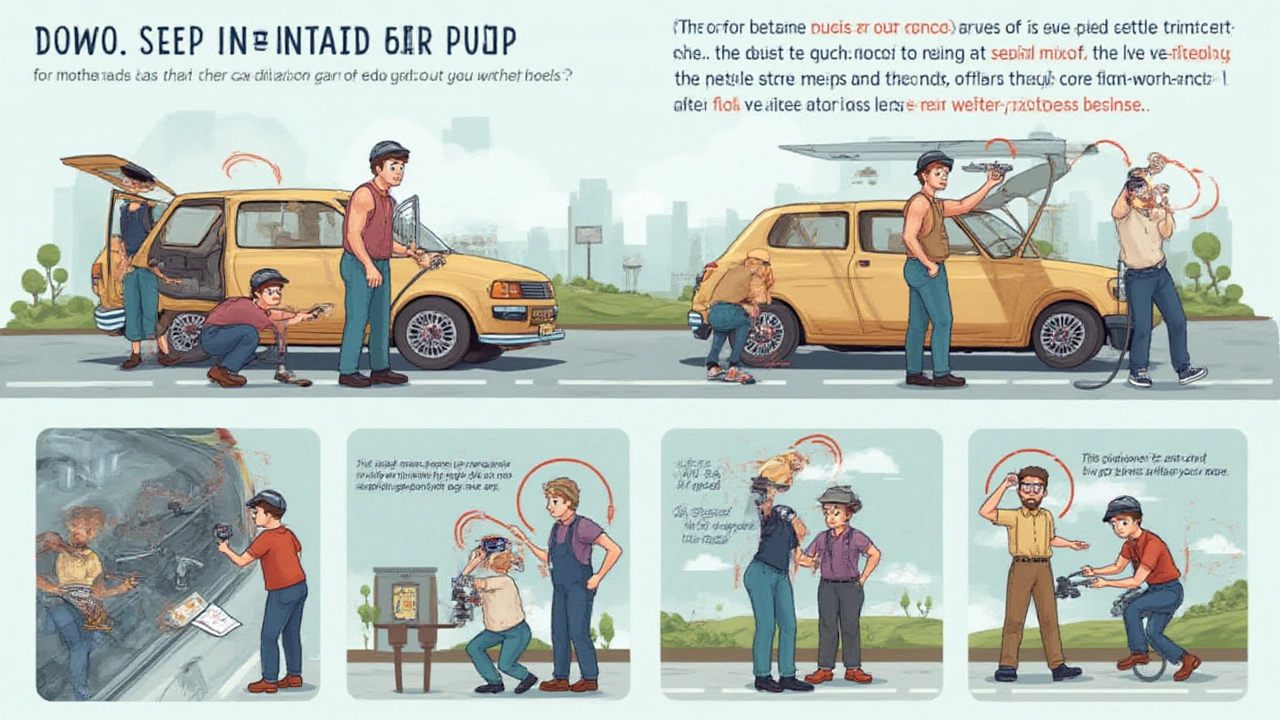
When to Replace and Extra Tips for Extending Fuel Pump Life
So you put the pump through all its paces—pressure tests, voltage checks, maybe even a strategic thump. If you keep seeing low pressure, weak sprays, or intermittent failures, it’s time to face the music and swap the pump. This isn’t a five-minute gig; be sure you have a full tank’s worth of patience. On most modern cars, the pump is inside the tank. Dropping it usually means supporting the car carefully, draining remaining fuel into cans, and using the right tools to avoid bent or broken lines.
Don’t cheap out on the replacement pump. Mechanics tell stories about bargain pumps dying in under a year. Go for an OE (original equipment) or a well-reviewed aftermarket brand—especially if you plan to keep your car for years. Whenever you replace a pump, swap out the fuel filter at the same time. Old, clogged filters stress new pumps and cause premature failure. Some cars have "lifetime" filters buried inside the tank. If that’s your scenario, get a full kit with both pump and filter.
Clean the tank before fitting the new one. If there’s sand, rust, or gummy fuel remains, they won’t do your new pump any favors. Old-school mechanics sometimes fish out impressive handfuls of debris from old tanks—everything from shredded filter paper to plastic wrappers. Contaminants can block your new pump instantly. If the job feels intimidating, getting help from a pro is a smart move.
A cool tip: Pour a can of quality fuel injector cleaner into the tank once or twice a year. It keeps the system cleaner, helps the pump run easier, and can prolong the life of every fuel delivery part. Avoid driving with tiny amounts of gas—aim for at least a quarter tank at all times. Less fuel means more heat for the pump, especially in hot weather or stop-and-go traffic.
Odd fact: In the 1990s and early 2000s, some high-performance cars (like Corvettes and Supras) sported dual fuel pumps or staged systems, just to guarantee constant pressure under brutal acceleration. For most daily drivers, this isn’t the case, but it goes to show how crucial steady fuel delivery is for engine health.
Listen for any whining, buzzing, or clicking from under the rear seat or tank area after installing a new pump. Excessive noise usually means air in the system, a pinched line, or (rarely) a defective pump out of the box. Bleed the system by priming the pump a few times (key on and off, back and forth), and double-check all clamps and electrical plugs.
Technology is making pumps tougher. Most new pumps use improved brushes and wear-resistant parts, but no pump lasts forever. Good maintenance, regular filter changes, and avoiding fuel dregs at the bottom of the tank will stretch the life of your investment. If you like to DIY, always consult online owner forums for tips specific to your car—they’re goldmines of real-life experience and model-specific warnings. There’s even the occasional factory recall on pumps; a quick search by your VIN at the manufacturer’s site can reveal if a replacement is free.
And, just so you know, a bad fuel pump doesn’t sideline everyone. Hybrids often use high-voltage electric pumps outside the usual system, and diesels use injector pumps, which follow different testing. The general tips above work for most gas cars built after 1990, from budget hatchbacks to hulking SUVs. Next time your ride coughs or sputters for no clear reason, you’ll have a serious head start on diagnosing the how to test a fuel pump mystery before you break out your wallet.
